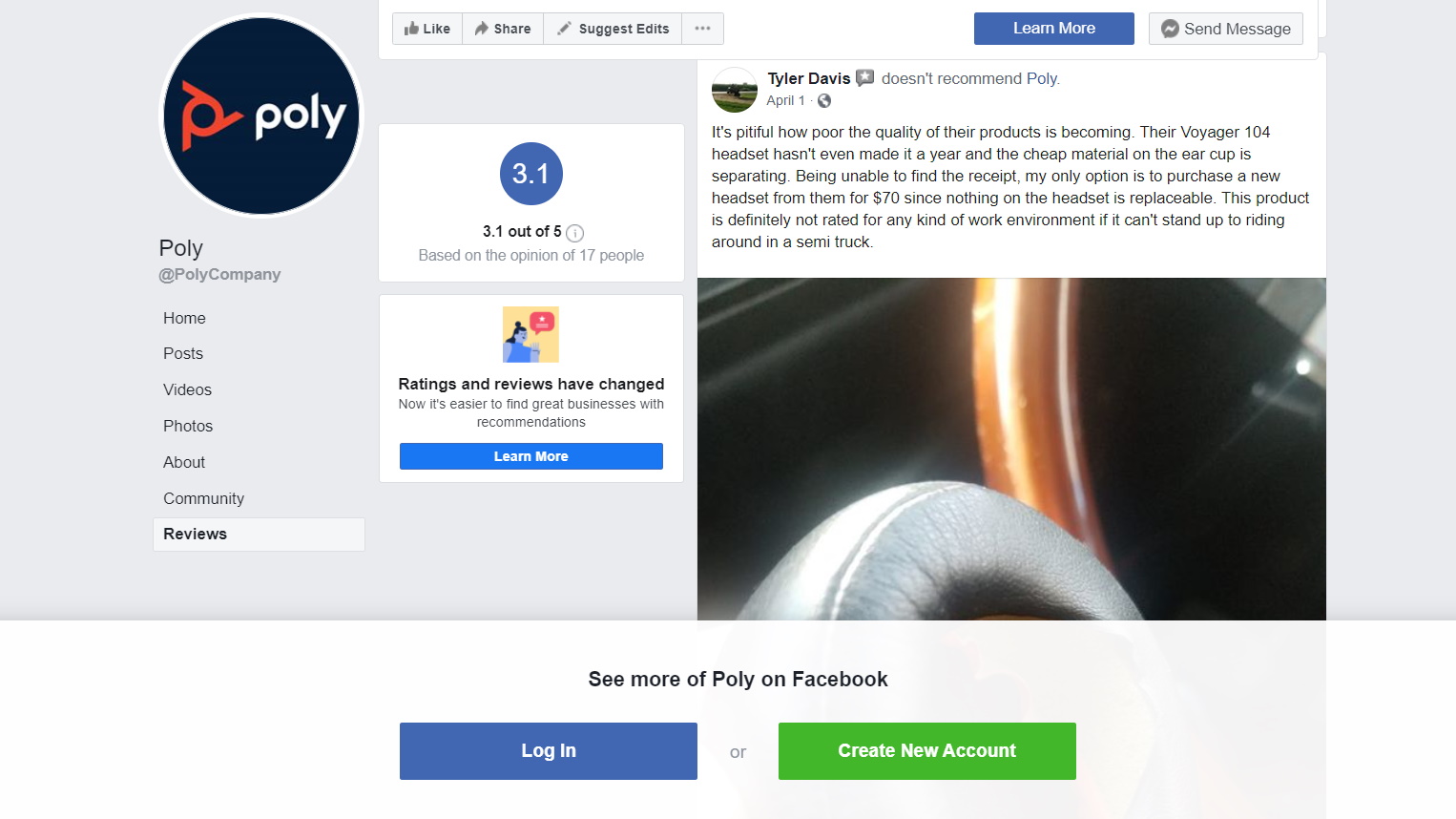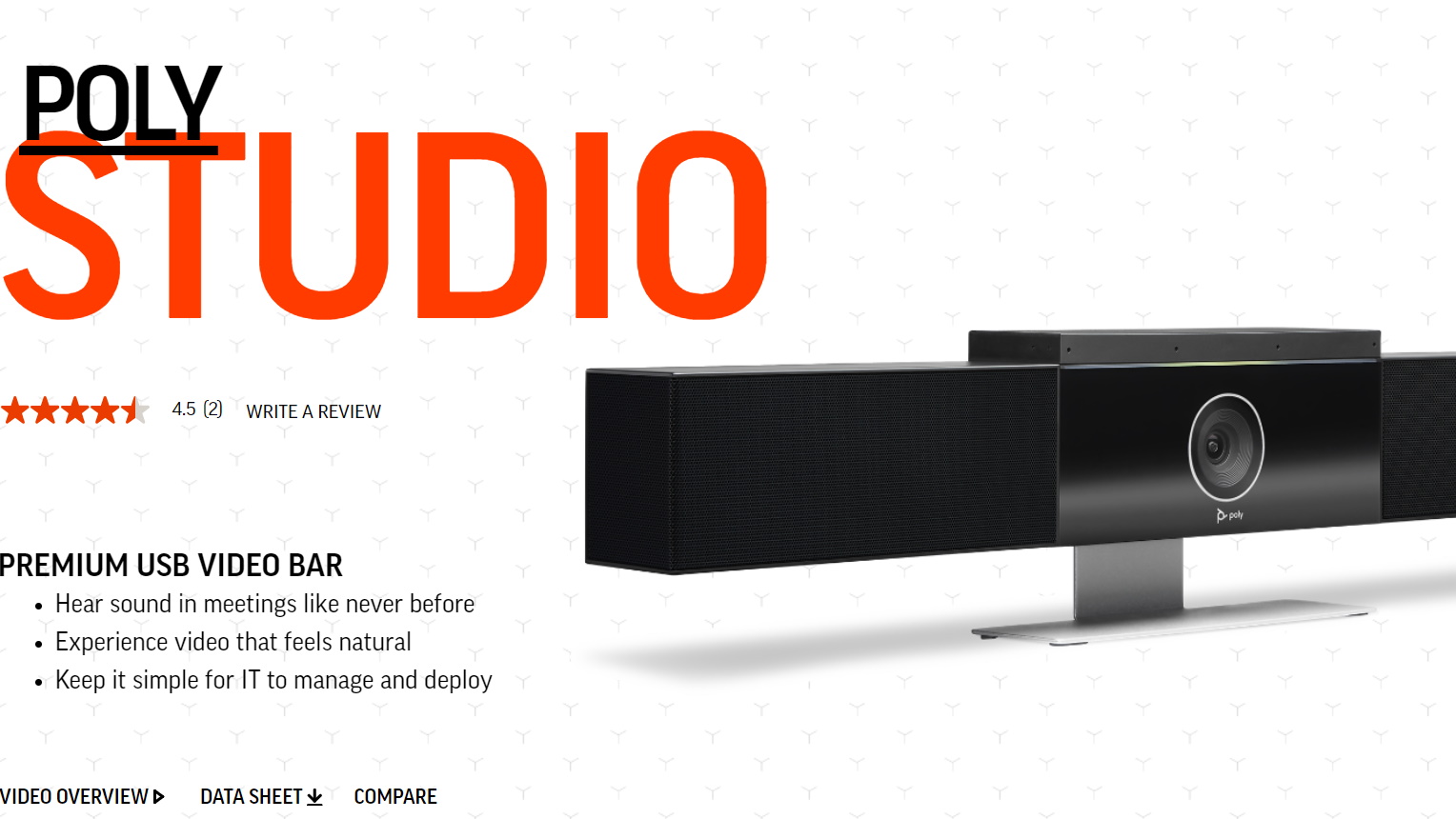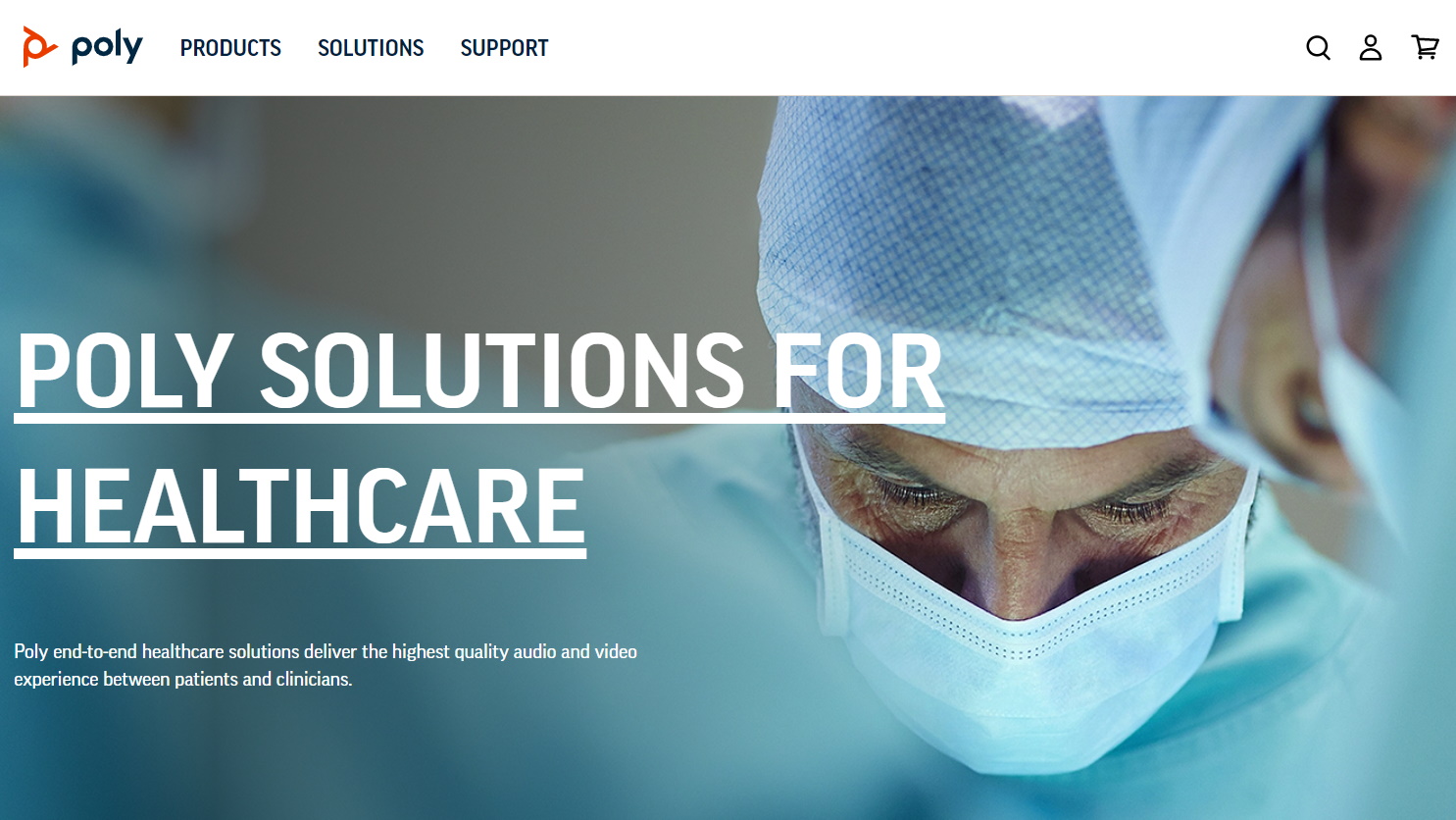TechRadar Verdict
Poly offers a power video platform with multiple potential uses in healthcare, but the reviews with frustrated users give us pause for concern.
Pros
- +
Professional quality
- +
Toll free phone support
- +
Works with major platforms
Cons
- -
Limited support options that lack chat and email
- -
Multiple negative reviews on social media
- -
Expensive
Why you can trust TechRadar
Poly is the current name for the former Polycom, an American multinational corporation. Poly was cofounded by Jeffrey Rodman and Brian L. Hinman back in 1990, and has a long history of innovation, with over 950 technology patents including licensing H.264 video codecs.
Back in 1998 Polycom debuted the ViewStation for video conferencing, getting them off to an early lead in this burgeoning segment. In 2018, Polycom was acquired by headset juggernaut Plantronics, and the name of this merged company was changed to Poly.
Features
The healthcare environment has a number of unique needs when it comes to video conferencing. For example, in the area of telehealth, for those that want to receive healthcare through an online platform, an important consideration is for the environment to be secure for the healthcare providers to be able to keep protected any health information. Poly has plenty of experience in the telehealth area, and boasts approximately 25,000 patient encounters monthly worldwide.
Unlike some other platforms that are the complete solution, Poly takes a different approach. They strive to sell the hardware, and support it, so that its video solution can integrate into an EHR or other platform. This way the video can actually be saved for future reference, in the platform of the provider’s choice.
Telehealth visits are certainly gaining in popularity and importance. This is in no small part due to the COVID crisis, and patient’s hesitation to access traditional healthcare routes. Still, Poly’s applications for video conferencing in healthcare go beyond just remote patient encounters.
Another area for video conferencing is for remote conferencing. Many hospitals are now part of regional healthcare systems, with individual facilities spread out geographically. There are plenty of occasions with the need for leadership to be able to gather to discuss important topics systemwide. In those situations, remote conferencing can be an ideal solution, which can reduce the costs, time constraints and even having a dedicated conference area, and allow all the principals to have the conference, and not to have to even leave their individual offices.
Furthermore, another area in healthcare that can benefit from video conferencing is educational conferences. Again, along the same lines as remote conferencing, having a video conference platform is a powerful tool. This can apply to Continuing Medical Education (CME) conferences, ‘Virtual home days’ to fulfill residency requirements of gathering the residents together on a weekly basis when they are rotating at different hospitals for training experiences, or for other trainees that are away from the main educational campus. In any of those cases, having access to Poly hardware on a video platform of choice can ease the burden of completing those educational requirements.

Drawbacks
Going through the reviews on the Poly Facebook page does not paint such a positive picture. Right away, it is notable that the overall score is 3.1 out of 5 stars.
Going through the reviews, a pattern emerges of frustrated users that felt that they had spent the additional money for an enterprise quality product, yet the longevity did not live up to what was supposedly promised. On top of that, there were issues in connecting with support, and getting the device working again.
We are not sure if this is the result of the merger between Polycom and Plantronics which is not that long ago, or that a few disgruntled users are skewing the score down, but it is concerning to say the least.
Support
Support gets offered via a few modalities. The first is a Knowledge Base, where users can search for “Answers, Solutions and Knowledge.” While most Knowledge Bases across the industry we tend to find too basic, that focus on items like making sure the device is plugged in and turned on, perusing through this Poly version, we find the items were quite specific, such as “Can you use Trio 8800 & Visual+ for Microsoft Teams video calls?”
The second option for support is via phone. There are toll free numbers that are designated by the regions of the world.
Finally, there is a Support Portal for entering issues, and opening cases. You can also find periodic security bulletins and advisories that give advice for best practices and keeping the device secure.
There are no other options, such as for chat, direct email, or an online forum to provide assistance.

Pricing
The solutions at Poly are priced a little differently compared to its competitors, that often price around a single monthly subscription fee, without a specification to the hardware cost as it is run as a SaaS, through a PC or any iOS or Windows smartphone.
Rather, Poly provides the platform, including specific hardware solutions. This allows for a consistent higher quality of video and audio, rather than relying on built in video capabilities for laptops or smartphones, that often use lower quality components. This is particularly true for those front facing cameras on smartphones that are typically of lower resolution than the camera on the back of the phone.
While not inexpensive, the hardware video and audio solutions that Poly offers provide for a higher quality experience for professional video conferencing. For example, the Premium USB Video Bar, as pictured above, has a cost of $949 (£757) when purchased directly from Poly as a single component.
There is also the option to contact sales to make a deal for a larger purchase of multiple components across an organization.
Final verdict
Poly offers enterprise video conferencing in support of telehealth. We like that it supports multiple platforms, and that it offers security for HIPAA compliance. However, it falls short on post purchase support, and overall we find the products expensive. We caution users to seek out a simpler platform that can be simpler to configure, and more reliable to use unless their needs are specific enough that the Poly products are the only solution.
- We've also highlighted the best telemedicine software
Jonas P. DeMuro is a freelance reviewer covering wireless networking hardware.
